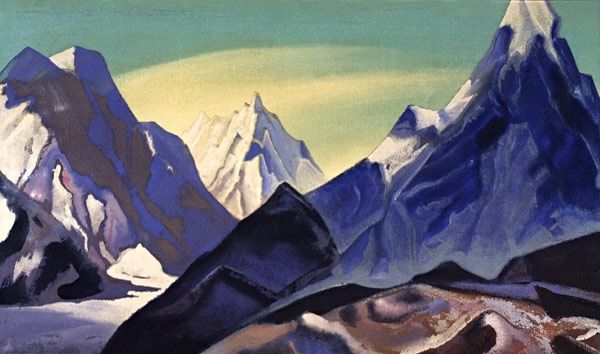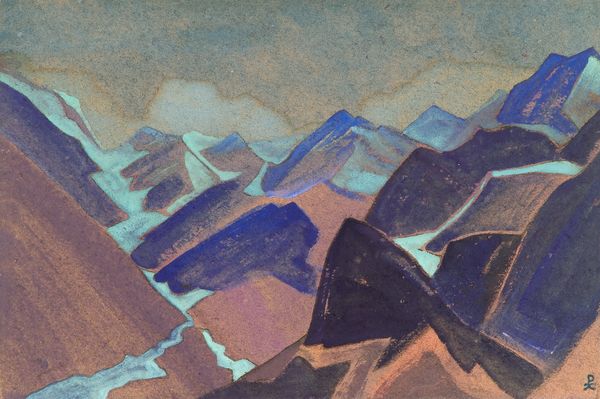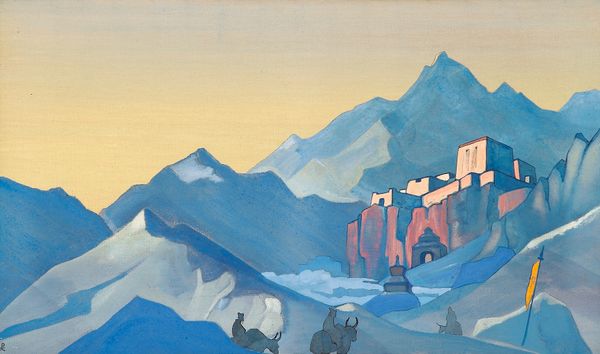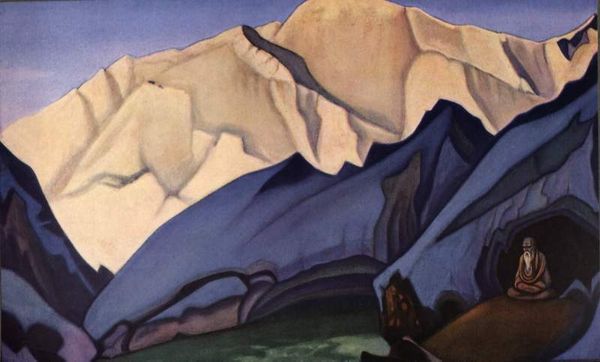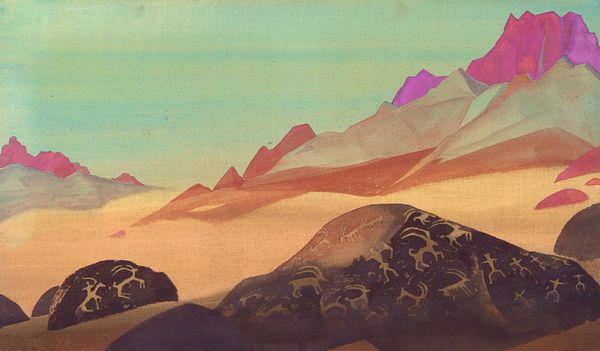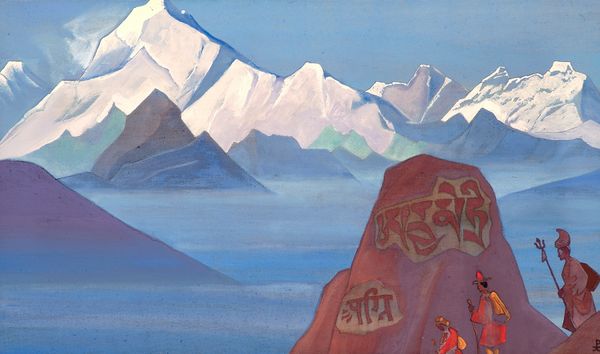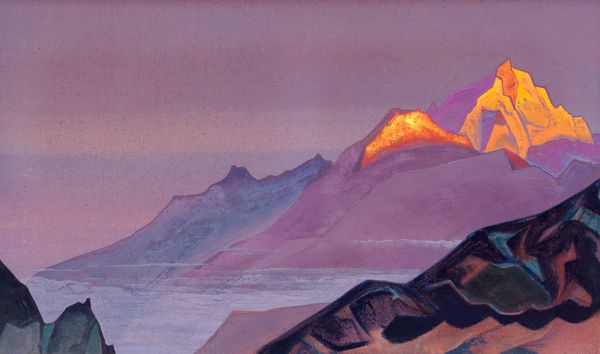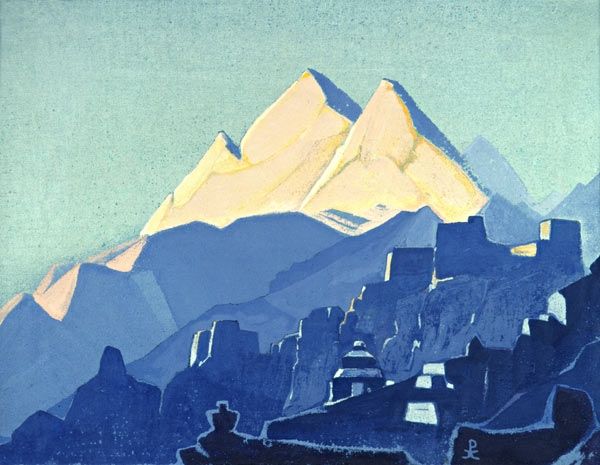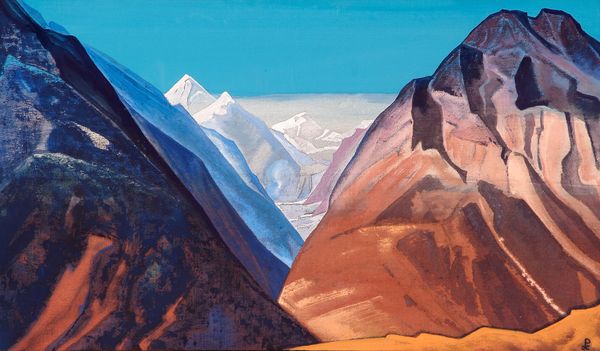
Dimensions: 61.5 x 92.5 cm
Copyright: Public domain
Curator: We're now looking at "Compassion," a 1936 tempera on canvas painting by Nicholas Roerich, currently held at the Latvian National Museum of Art in Riga. Editor: The colour palette is immediately striking—muted pinks and purples dominating a stark, mountainous landscape. It has this dreamlike, almost stage-set quality to it. What's most interesting to me, though, is the texture of those rocks, very much implying some use of coarse material within that paint, don't you think? Curator: Indeed. Roerich’s work, particularly in the 1930s, engages deeply with Eastern philosophy and theosophy. "Compassion" reflects Roerich's engagement with Buddhist themes of universal kindness. We can read it as part of Roerich’s broader advocacy for cultural preservation. He pushed for the Roerich Pact, an international agreement for the protection of cultural sites during armed conflict. Editor: That's interesting—cultural preservation as an intentional goal! This advocacy would be tied directly into his material practice and how he portrays remote regions and their inhabitants. Notice how the figure on the left, a kind of lone traveler, has minimal shading? What implications does that flattening have on Roerich’s social engagement? Curator: I think it’s key. It reinforces Roerich's vision of universal unity. Roerich spent considerable time in the Himalayas and that direct experience obviously permeates his artistic output. Editor: Absolutely. The way those mountains loom, colored sharply—there's no question where the value is here. Yet I find myself still curious as to why he so very specifically returned to tempera, instead of pursuing newer forms of making. Does that not speak of his intentional effort? Curator: Precisely. It suggests a deep appreciation of tradition but also underscores the symbolic and spiritual properties he associated with the medium. "Compassion", in this way, becomes a vehicle for conveying spiritual truths, not merely representing a landscape. Editor: Well, seeing the artwork this way, considering the material composition itself in the face of Roerich's spiritual goals, definitely reframes how I understand the picture! It speaks to the means and intention both. Curator: It becomes clear Roerich believed art has a real transformative power to influence our understanding of the world, so perhaps the rosy, peaceful hue suggests that this might even be obtainable!
Comments
No comments
Be the first to comment and join the conversation on the ultimate creative platform.



